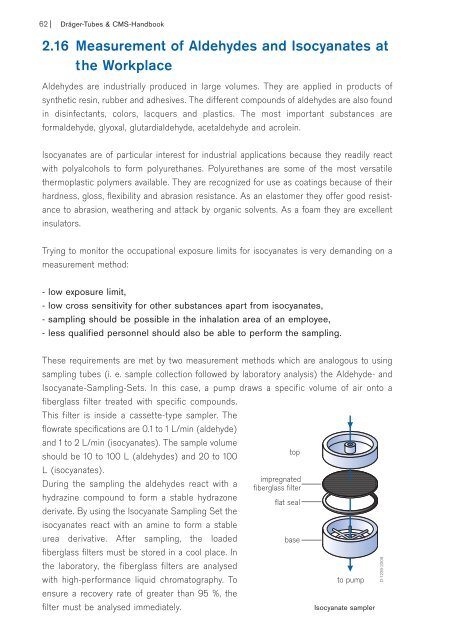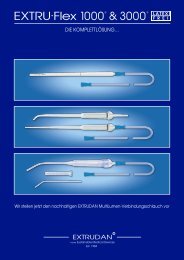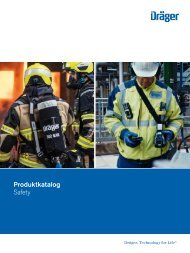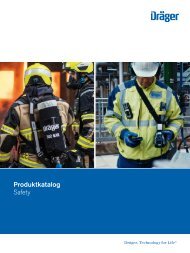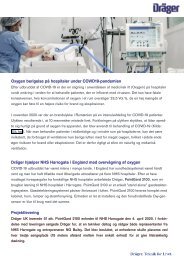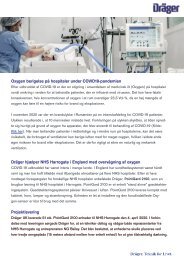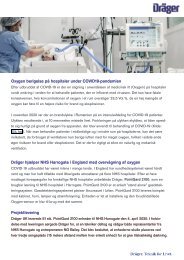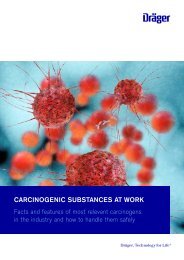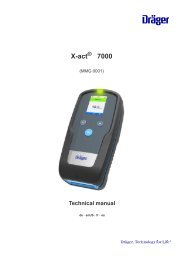You also want an ePaper? Increase the reach of your titles
YUMPU automatically turns print PDFs into web optimized ePapers that Google loves.
62| Dräger-<strong>Tubes</strong> & CMS-<strong>Handbook</strong><br />
2.16 Measurement of Aldehydes and Isocyanates at<br />
the Workplace<br />
Aldehydes are industrially produced in large volumes. They are applied in products of<br />
synthetic resin, rubber and adhesives. The different compounds of aldehydes are also found<br />
in disinfectants, colors, lacquers and plastics. The most important substances are<br />
formaldehyde, glyoxal, glutardialdehyde, acetaldehyde and acrolein.<br />
Isocyanates are of particular interest for industrial applications because they readily react<br />
with polyalcohols to form polyurethanes. Polyurethanes are some of the most versatile<br />
thermoplastic polymers available. They are recognized for use as coatings because of their<br />
hardness, gloss, flexibility and abrasion resistance. As an elastomer they offer good resistance<br />
to abrasion, weathering and attack by organic solvents. As a foam they are excellent<br />
insulators.<br />
Trying to monitor the occupational exposure limits for isocyanates is very demanding on a<br />
measurement method:<br />
- low exposure limit,<br />
- low cross sensitivity for other substances apart from isocyanates,<br />
- sampling should be possible in the inhalation area of an employee,<br />
- less qualified personnel should also be able to perform the sampling.<br />
These requirements are met by two measurement methods which are analogous to using<br />
sampling tubes (i. e. sample collection followed by laboratory analysis) the Aldehyde- and<br />
Isocyanate-Sampling-Sets. In this case, a pump draws a specific volume of air onto a<br />
fiberglass filter treated with specific compounds.<br />
This filter is inside a cassette-type sampler. The<br />
flowrate specifications are 0.1 to 1 L/min (aldehyde)<br />
and 1 to 2 L/min (isocyanates). The sample volume<br />
should be 10 to 100 L (aldehydes) and 20 to 100<br />
L (isocyanates).<br />
During the sampling the aldehydes react with a<br />
hydrazine compound to form a stable hydrazone<br />
derivate. By using the Isocyanate Sampling Set the<br />
isocyanates react with an amine to form a stable<br />
urea derivative. After sampling, the loaded<br />
fiberglass filters must be stored in a cool place. In<br />
the laboratory, the fiberglass filters are analysed<br />
with high-performance liquid chromatography. To<br />
ensure a recovery rate of greater than 95 %, the<br />
filter must be analysed immediately.<br />
top<br />
impregnated<br />
fiberglass filter<br />
flat seal<br />
base<br />
to pump<br />
Isocyanate sampler<br />
D-1239-2009


